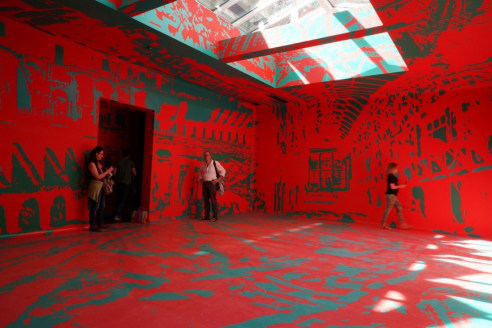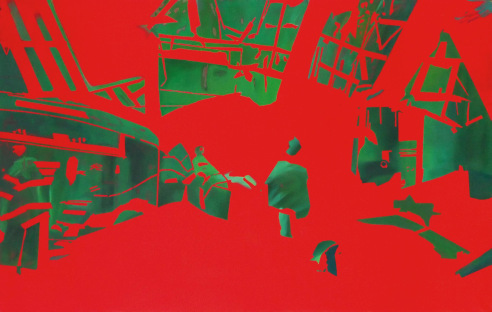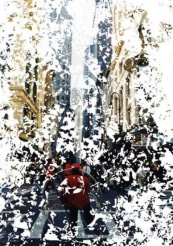
Irina Nakhova (b. 1955, Moscow) graduated from the Graphic Design Department of the Moscow Institute of Polygraphy in 1978, where she studied with a generation of Russian nonconformist artists now known as the Moscow Conceptual School. She received international recognition as a young artist for Rooms (1983-1987), the first “total installation” in Russian art, located in the Moscow apartment where she still lives today.
An installation artist and academically trained painter, Nakhova combines painting, sculpture, and new media into interactive installations and environments that engage viewers as co-creators of conceptual mindscapes. "One of my largest goals is to create spaces for difference experiences, physical and intellectual, that do not exist otherwise as spaces," Nakhova said in an interview with New York Arts Magazine. "I am interested in art that gives experiences, that is powerful and eye-opening and that has significance. Significance in a way that gives insight to both individual and social life, as I still believe that art is power."
Nakhova was a member of the Union of Artists of the USSR from 1986 to 1989. Her first monograph, Irina Nakhova: Works 1973-2004, was co-published in 2004 by the Salzburg International Summer Academy, Austria, and the National Centre for Contemporary Arts, Moscow. Nakhova received the prestigious Kandinsky Prize for “Project of the Year” in 2013, one of the highest honors in contemporary Russian art. In 2015, she was chosen as the first female artist to represent Russia in its pavilion at the Venice Biennale, with an installation, The Green Pavilion, that The Guardian called "haunting...its impact is devastatingly direct."
In the catalogue for The Green Pavilion, curator Margarita Tupitsyn writes of Nakhova’s green-red room, “The abstract composition comes from Nakhova’s earlier canvas Primary Colors 2 (2003), imbued with the Russian avant-garde’s reductive color theories…and embrace of what Malevich termed ‘a new color realism.’ Applied mechanically, the latter transgresses the boundaries of the canvas to operate in literal space. In this sense, Nakhova’s green-red room is a postmodern (Jamesonian) hybrid of color-form and color-text in which one can locate the traces and distortions of society as a whole.”
Nakhova’s work has been shown in over thirty solo exhibitions and numerous major group exhibitions worldwide. Her work can be found in private collections and museum collections such as Tate Modern, London; The Norton and Nancy Dodge Collection of Soviet Nonconformist Art, New Brunswick; The State Tretyakov Gallery, Moscow; and the Moscow Museum of Modern Art. She has taught contemporary art at Wayne State University, Carnegie Mellon University, Princeton University, and the International Summer Academy of Fine Arts, Salzburg, among other institutions.
Irina Nakhova lives and works in the United States and Russia.

















